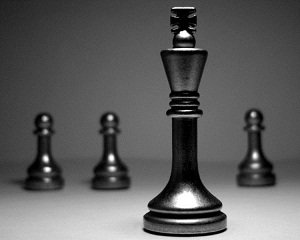Sanchita Basu Das

16th ASEAN Summit was held at Hanoi, Vietnam in April 2010.
When the 16th ASEAN Summit convened in Vietnam on 8th April 2010, it grabbed the headlines of national newspapers for many problems among its member countries. Thailand’s Prime Minister Abhisit Vejjajiva cancelled his trip to the Summit to deal with mass antigovernment protests in Bangkok.
After raising some speculation to cut short her trip, the President of Philippines, Gloria Macapagal-Arroyo changed her mind and stayed on till the end of the Summit. General Thein Sein from Myanmar received lot of attention as the ASEAN leaders repeatedly urged for a free and fair election.
But as the Summit progressed, it brought froth the advances in the collective effort to form an ASEAN Economic Community (AEC) by 2015. Beginning 1 January 2010, ASEAN has effectively established the ASEAN Free Trade Area (AFTA). ASEAN-6 achieved full liberalization of 99.6 percent of the total tariff lines and CLMV countries (Cambodia, Laos, Myanmar and Vietnam) had already established 98. 8 percent of their total tariff lines at 0-5percent under the Common Effective Preferential Tariffs for AFTA.
Intra ASEAN trade almost tripled to US$ 458 billion in 2008 as compared to 2000 when all ten Member States joined the AFTA. Early 2010 also saw ASEAN realizing its FTAs with China and South Korea, as well as the entry into force of the ASEAN-Australia-New Zealand FTA and the ASEAN-India Trade in Goods Agreement. While these are significant steps in the right direction, much remains to be done.
On the financial front, ASEAN+3 (China, Japan and Korea) initiated the Chiang Mai Initiative Multilaterialization (CMIM) and created a useful US$120 billion currency swap and crisis management facility for regional economies. This came into force on 24 March 2010. These rates of progress were also tabled at the third AEC Council held in the run-up to the Summit. The report, “AEC Scorecard”, published by ASEAN Secretariat, states that in the first two years of the implementation of the AEC 73.6 percent of the targets set in the AEC Blueprint have been achieved.
However, during the Summit, ASEAN leaders have acknowledged the fact that despite progress in the region’s economic integration, the developmental divide that separates its member countries impedes the vision of a single market with free flow of goods, services, investment, capital and skilled labour from becoming a reality. In addition to differences in development of various socio-economic factors, there is a wide gap evident in institutional capacity and human resources between the newer ASEAN member countries i.e. CLMV, and their other ASEAN counterparts.
In fact, the current weak human resource capabilities in the CLMV countries together with weak policies, as well as institutional and legal frameworks, make it difficult for these countries to raise their productivity levels, which further constrain their absorptive capacity in making use of foreign aid and investments. While Vietnam is fast catching up with the less-advanced countries in the ASEAN-6, Cambodia, Laos and Myanmar still have a long way to go. Hence to achieve a dynamic and sustained AEC, leaders from the 10-member ASEAN grouping agreed to cooperate on the education sector as a priority.
A larger base
As the Summit came to an end, it became evident that ASEAN leaders are fully committed to creating the economic community by 2015. There is a growing realisation among the leaders that the size of the market does matter. They called on enhancement of the bloc’s connectivity in Mekong and other sub-regions of ASEAN and promotion of future East Asian connectivity.
This is more so after the global economic crisis, as the “single market and production base” promised under AEC is expected to provide not only a highly competitive economic region but with strong emergence of China after the crisis, the AEC will be ideally placed to take advantage of the production chain evolving in Asia. Moreover, the integration of the ASEAN as a single market is expected to provide a larger base to smooth out global shocks and increase the ability of the reform to ride external shock more effectively.
The Summit also illuminated the importance of cooperation. The leaders called on regional governments to prepare to wind down economic stimulus measures brought in during the global financial crisis. The leaders reiterated that ASEAN nations should refrain from implementing protectionist measures. Indeed, as the export demand from western markets remains low, ASEAN should work more closely with its Asian neighbours.
In the years to come, with rising per capita purchasing power, Asian consumers are likely to generate more demand for intra-Asian goods and services. This is already evident in trade figures, as intra-regional trade as a share of East Asia’s total trade has gone up from 37 percent to 55 percent (including Japan) during 1980 to 2006.
Sanchita is the Lead Researcher for Economic Affairs at the ASEAN Studies Centre, Institute of Southeast Asian Studies. This article was first published by Business Times on 21 April 2010.

